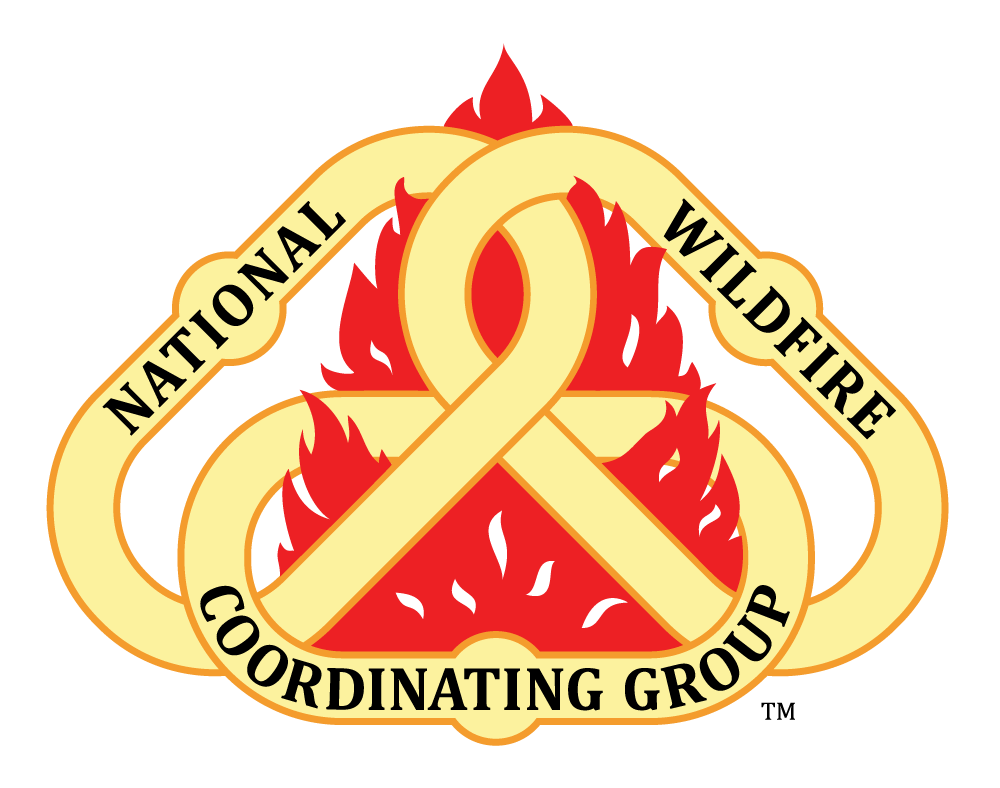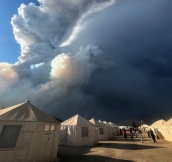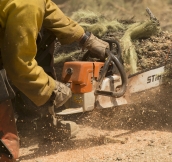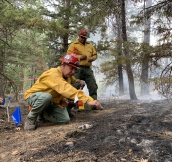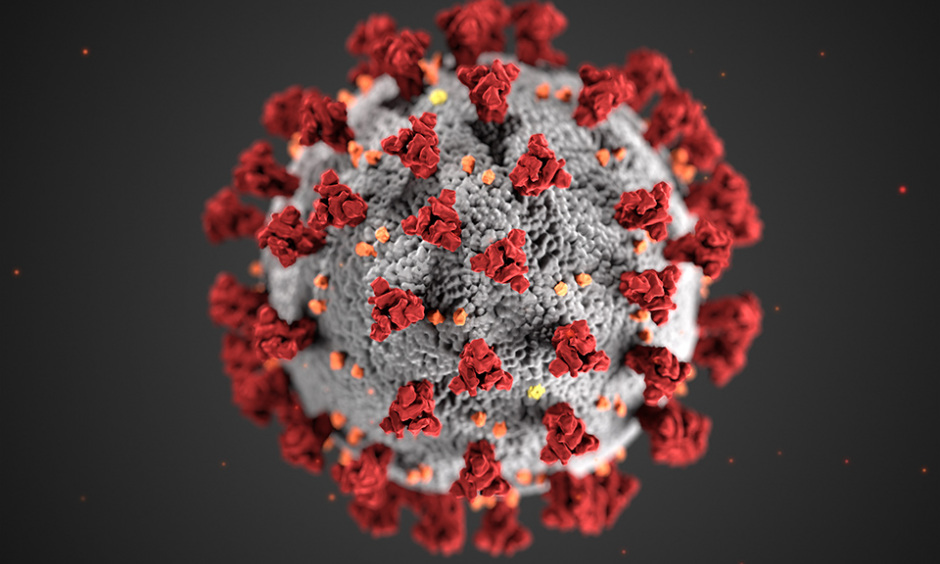 Introduction
Introduction
A significant amount of information regarding COVID-19 has been distributed as agencies respond to the Coronavirus pandemic. This page provides wildland fire personnel quick, singe-point access to COVID-19 prevention and management information pertinent to wildland fire operations. As always, all wildland fire personnel are responsible for ensuring compliance with home-agency direction.
Wildland Fire-Specific Information and Direction on COVID-19
Operational Tools
- FMB Wildland Fire COVID-19 Page
- Fire and COVID-19 Briefing Checklist Decal (English and Spanish versions) for Incident Response Pocket Guide (IRPG), PMS 461
- COVID-19 National Cache Support Items
Testing and Screening Information
- Testing Guidance
- FMB COVID-19 Interim Screen Protocol for Wildland Fire Personnel; Spanish version: Protocolo Provisional de Detección del COVID-19 para Personal de Incendios Forestales
- Wildland Fire COVID-19 Screening Tool (Supplemental to the COVID-19 Interim Screening Protocol for Wildland Fire Personnel released by the Federal Fire Management Board.).
- Wildland Fire COVID-19 Screening Tool (Supplemental to the COVID-19 Interim Screening Protocol for Wildland Fire Personnel released by the Federal Fire Management Board.).
Prevention and Management Information
- FMB Memo 21-007, MPHAT Wildland Fire COVID-19 Prevention and Mitigation 2021
- MPHAT Guidance for Prevention and Management of COVID-19 During Wildland Fire
- FMB Memo 21-002, Coronavirus Disease (COVID-19) Vaccines for Wildland Fire Personnel
- NWCG Quick Guide to Prevention and Management of COVID-19 During Wildland Fire Operations
- NWCG Infectious Disease Guidance for Wildland Fire Incidents
- NWCG Standards for Aviation Operations in Response to the Coronavirus Disease (COVID-19)
- DOI: Wildfires and COVID-19
- 6MFS
Other Resources
Older Information But Still Useful
Key Takeaways:
Get Ready for Fire Season 2022!
Key Mitigations to Practice
Read
Videos Related to Coronavirus
Note: Videos were created in 2020 and guidance has changed slightly. The videos are still relevant but ensure you are checking for the most up to date guidance.
COVID-19: NWCG Executive Board Message
NWCG Executive Board Chair Frank Guzman shares a message about COVID-19 to the wildland fire community.
Time: 1:38
COVID-19: Mental Health Awareness
The pressures of wildland fire response have been compounded in 2020 by the presence of COVID-19. NWCG Mental Health Subcommittee Co-Chair Bodie Ronk shares a message about the importance of mental health awareness.
Time: 1:36
COVID-19: A Message from Fire Leadership
The global coronavirus pandemic adds additional complexity to wildland fire suppression. Leaders from various NWCG member agencies share their intent regarding challenges associated with COVID-19, mitigation strategies, and special considerations for wildland fire personnel this fire season.
Time: 10:32
COVID-19: Prevention for Fire Personnel
An Incident Commander, Fire Staff Officer, Medical and Public Health Advisory Team member, and Medical Officer discuss the importance of COVID-19 spread prevention and describe best practices for wildland fire response personnel.
Time: 12:34
LLC Resources for COVID-19 Education
The Wildland Fire Lessons Learned Center promotes ongoing learning in the wildland fire service. Assistant Center Director Alex Viktora describes LLC resources associated with COVID-19 in fire season 2020 and provides a tour of some useful features of Wildland Fire Lessons Learned Center.
Time: 2:39
COVID-19: Psychological Transition and Balance
Dr. Steven Nicholas, a mental health professional with an extensive background counseling first responders, describes concepts and tools to assist fire personnel in monitoring and managing stress and mental health.
Time: 11:20
Documents referenced in the video:
COVID-19: Taking Care of Fire Personnel
In the wake of the COVID-19 pandemic, safe wildland fire response requires additional coordination and specialized procedures. MPHAT Coordinator Kaili McCray discusses the importance of public health engagement during pre-incident planning and describes available resources for fire personnel.
Time: 8:13
COVID-19 Resource Movement
Firefighters and personnel are essential, emergency service providers who often need to be moved inside and across state boundaries to successfully fight fire. Sharing resources and helping each other is the key to our success. Covid-19 has presented new challenges to move resources safely and effectively. In this video, resource managers discuss various strategies and tactics being implemented to help move resources throughout the country.
Time: 9:12

